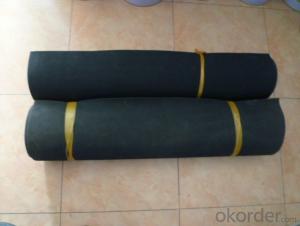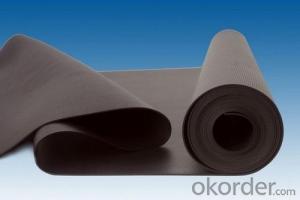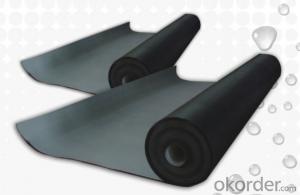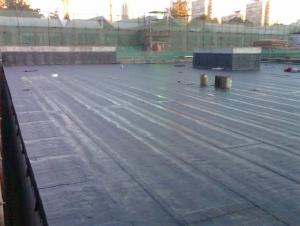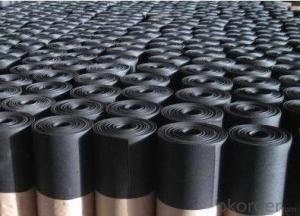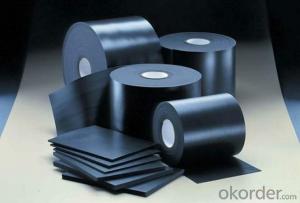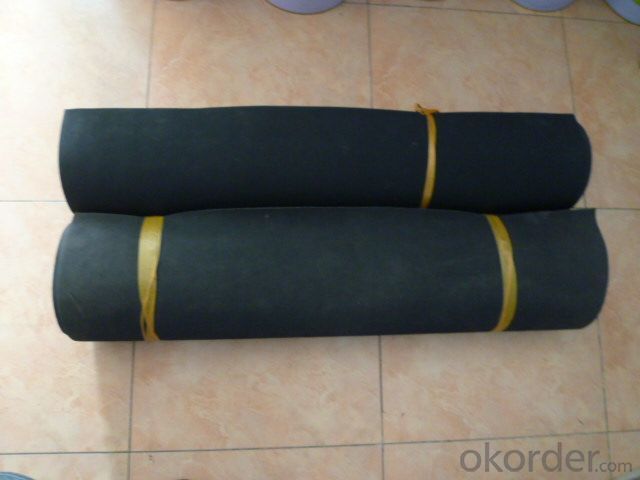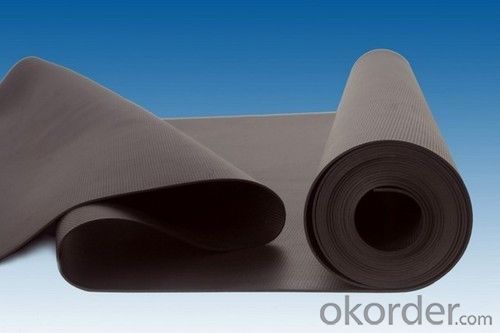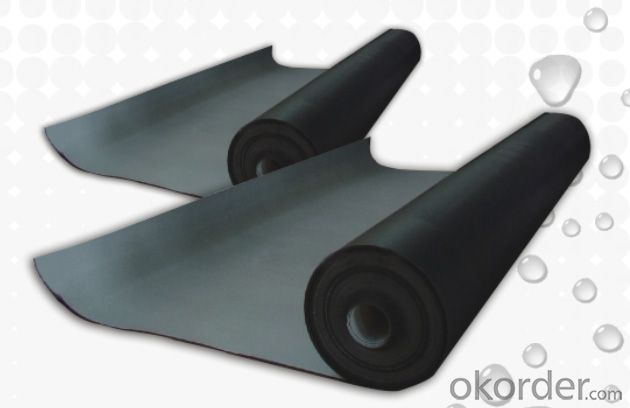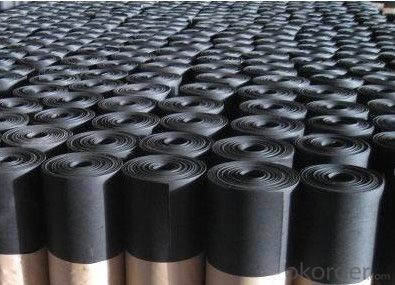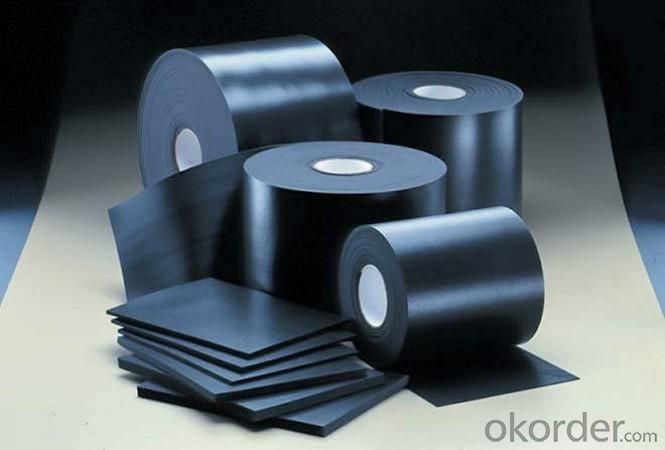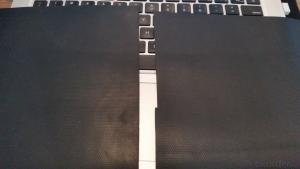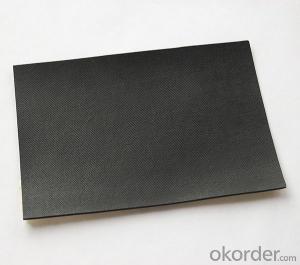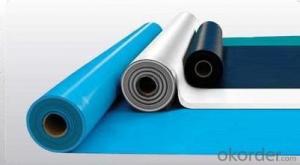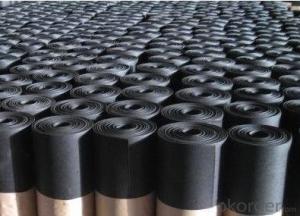EPDM Coiled Rubber Waterproof Membrane for Basement
- Loading Port:
- Shanghai
- Payment Terms:
- TT or LC
- Min Order Qty:
- 10000 m²
- Supply Capability:
- 1200000 m²/month
OKorder Service Pledge
OKorder Financial Service
You Might Also Like
EPDM Coiled Rubber Waterproof Membrane for Basement
Description Of EPDM Coiled Rubber Waterproof Membrane for Basement:
1. EPDM waterproof membrane is made from ternary ethylene-propylene rubber, which is for waterproofing of exposed and non-exposed applications.
2. EPDM waterproof membrane production adopts the world-advanced equipment of cold feeding extrusion and continuous vulcanization technology.
3. EPDM waterproof membrane is of high elasticity among high polymer waterproof materials and becomes a world-popular waterproofing material.
Main Features of EPDM Coiled Rubber Waterproof Membrane for Basement:
1. Excellent physical and mechanical performance
2. High tearing resistance
3. Good deformation adaptability
4. High puncture resistance
5. High aging resistance
6. UV resistance
Specifications of EPDM Coiled Rubber Waterproof Membrane for Basement:
| Material | EPDM Rubber |
| Size | 1.2m (width)*20m (length) or customized, weldable type 2.05m or 4m width |
| Thick | 1.2mm, 1.5mm, 2.0mm |
| Type | Vulcanized & Weldable |
| Pattern | Non-reinforced (homogeneous) |
| Certificate | ISO9001/14001 |
Applications of EPDM Coiled Rubber Waterproof Membrane for Basement:
1.Roofs, Basement, Toilets
2. Industrial and civil building waterproofing
3. Geosynthetic liner for swimming pool, channels, irrigation system
4. Especially suitable for projects with high requirements in durability, anti-corrosion and deformation.
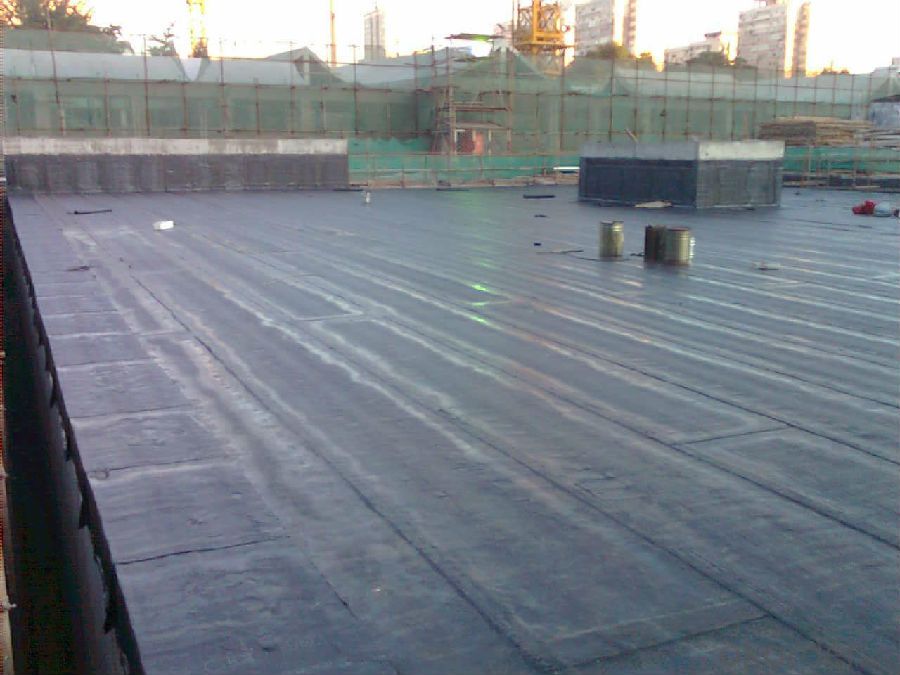
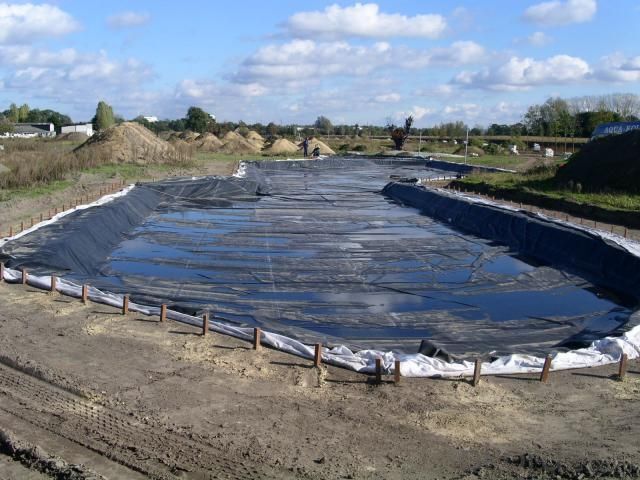

IMages of EPDM Coiled Rubber Waterproof Membrane for Basement:




FAQ EPDM Coiled Rubber Waterproof Membrane for Basement:
1. What are we supplying?
We are specialized in producing Colorful Asphalt Roof Shingle, SBS/APP modified bitumen waterproof membrane, Self adhesive bitumen waterproof membrane, PVC waterproofing membrane, EPDM rubber roofing membrane, Single Component Polyurethane Waterproof Coating, and Spray Polyurea Waterproof Coating
.
2. How Many years experience do we have?
We have been exported to more than 20 countries in the past 15 years.
3. How long do we usually reply your request?
We always reply our customer within 24 hours.
- Q: Can a waterproofing membrane be used for a bridge deck construction?
- Yes, a waterproofing membrane can be used for bridge deck construction. Waterproofing membranes are commonly used in bridge deck construction to protect the underlying structure from water infiltration, which can cause corrosion and damage over time. The membrane acts as a barrier to prevent water from seeping into the concrete, ensuring the durability and longevity of the bridge deck.
- Q: Can a waterproofing membrane be applied on any surface?
- A waterproofing membrane can be applied on a variety of surfaces, but it is important to consider the specific characteristics and requirements of each surface before proceeding. While many waterproofing membranes are versatile and can adhere to different materials, it is recommended to consult with a professional or manufacturer to ensure compatibility and optimal performance. For concrete surfaces, waterproofing membranes can be applied to prevent water penetration and protect against moisture damage. These membranes are typically designed to adhere to concrete and provide a barrier against water and vapor transmission. However, it is important to properly prepare the concrete surface by cleaning, repairing any cracks or imperfections, and ensuring a smooth and even substrate for the membrane. Similarly, waterproofing membranes can be applied to masonry surfaces such as brick or stone. These surfaces may require additional preparation, such as removing loose mortar or debris, and may benefit from a primer to enhance adhesion. Additionally, certain types of waterproofing membranes may be more suitable for these surfaces depending on their porosity and texture. Waterproofing membranes can also be applied to wood surfaces, such as decks or balconies, to protect against moisture damage and extend their lifespan. However, it is important to select a membrane specifically designed for wood surfaces as they may require additional flexibility to accommodate the natural movement and expansion of the wood. In summary, while a waterproofing membrane can be applied on various surfaces, it is crucial to consider the specific characteristics and preparation requirements of each surface to achieve optimal results. Consulting with a professional or manufacturer can help determine the most suitable membrane and application method for a particular surface.
- Q: Are waterproofing membranes resistant to gas and vapor transmission?
- Yes, waterproofing membranes are generally resistant to gas and vapor transmission. These membranes are designed to provide a barrier against water penetration, but they also offer resistance to the transmission of gases and vapors. This resistance is crucial in preventing the movement of moisture and potentially harmful gases or vapors through the membrane and into the structure. Waterproofing membranes are typically made from materials that have low permeability to gases and vapors, such as synthetic rubber, thermoplastic, or bitumen. Additionally, they are often reinforced with additives or layers to enhance their resistance to gas and vapor transmission. Overall, by using waterproofing membranes, one can create a durable and effective barrier against water, gases, and vapors in various construction applications.
- Q: Can a waterproofing membrane be applied over cracks or joints in a surface?
- Yes, a waterproofing membrane can be applied over cracks or joints in a surface. In fact, it is often recommended to do so in order to ensure a complete and effective waterproofing system. The membrane acts as a barrier that prevents water from seeping through the cracks or joints and causing damage to the underlying structure. However, it is important to note that the cracks or joints should be properly repaired and prepared before applying the waterproofing membrane. This may involve cleaning, filling, and sealing the cracks or joints to ensure that the membrane adheres properly and provides a continuous and watertight seal. Additionally, the type of waterproofing membrane used should be selected based on the specific requirements and conditions of the surface being treated.
- Q: Can a waterproofing membrane be used for a swimming pool liner?
- Yes, a waterproofing membrane can be used as a swimming pool liner. Waterproofing membranes are designed to provide a barrier against water penetration, making them suitable for use in swimming pools to prevent leaks and maintain the water integrity.
- Q: Can waterproofing membranes be used on utility tunnels?
- Utility tunnels, which are often exposed to moisture and water infiltration, can benefit from the use of waterproofing membranes. These membranes serve to safeguard the tunnel structure against water damage and ensure its longevity. Their purpose is to establish a barrier between the structure and its surroundings, effectively halting the seepage of water into the tunnel. Typically crafted from materials like bitumen or synthetic polymers, these membranes possess remarkable resistance against water penetration. By applying them to the walls, floors, and ceilings of utility tunnels, they provide comprehensive protection against water-related issues, including leaks, cracks, and deterioration. Furthermore, waterproofing membranes also play a vital role in upholding the integrity of utility tunnels by thwarting the influx of harmful substances such as chemicals or pollutants. In conclusion, the application of waterproofing membranes to utility tunnels represents a highly effective means of guaranteeing their long-term durability and functionality.
- Q: Can waterproofing membranes be used on metal roofs?
- Indeed, it is possible to utilize waterproofing membranes on metal roofs. When it comes to safeguarding and sealing roofs, including metal ones, waterproofing membranes are frequently favored. These membranes are specifically engineered to serve as a barrier against water infiltration, thereby safeguarding the roof's structure and preventing any potential leaks. They can be directly applied to the metal roof surface, creating an impervious seal that is resistant to moisture, UV rays, and other environmental elements. By implementing waterproofing membranes, the lifespan of metal roofs can be considerably prolonged, as they effectively prevent rust and corrosion, while also boosting energy efficiency by minimizing heat transfer. Consequently, applying waterproofing membranes on metal roofs represents a practical and successful approach to ensure both durability and longevity.
- Q: Are there different waterproofing membrane options for above-ground and below-ground applications?
- Yes, there are different waterproofing membrane options available for above-ground and below-ground applications. Above-ground applications typically involve waterproofing structures such as roofs, balconies, or walls. For these applications, commonly used waterproofing membrane options include liquid-applied membranes, sheet membranes, and polyurethane membranes. These membranes are designed to withstand exposure to weather elements such as UV rays, temperature changes, and foot traffic. On the other hand, below-ground applications involve waterproofing structures like basements, foundations, or tunnels. Below-ground waterproofing membranes are specifically designed to withstand hydrostatic pressure from the surrounding soil and groundwater. These membranes are typically thicker and more durable than above-ground membranes. Commonly used below-ground waterproofing options include bituminous membranes, bentonite clay membranes, and composite membranes. It is important to choose the right waterproofing membrane for each specific application as the requirements and challenges can vary. Consulting with a waterproofing professional or engineer can help determine the most suitable membrane option for both above-ground and below-ground applications.
- Q: Can a waterproofing membrane be used for retaining walls?
- Yes, a waterproofing membrane can be used for retaining walls. Waterproofing membranes are commonly used to prevent water infiltration and protect structures from moisture damage. Applying a waterproofing membrane to a retaining wall can help prevent water seepage, reduce hydrostatic pressure, and extend the lifespan of the wall by preventing water-related deterioration.
- Q: Can waterproofing membranes be used on roofs?
- Yes, waterproofing membranes can be used on roofs. These membranes are designed to provide a barrier against water infiltration, protecting the roof structure and preventing leaks. They are commonly used in various types of roofs, including flat roofs, low-slope roofs, and even sloped roofs in certain cases. Waterproofing membranes offer excellent durability and flexibility, making them an effective solution for roof waterproofing.
Send your message to us
EPDM Coiled Rubber Waterproof Membrane for Basement
- Loading Port:
- Shanghai
- Payment Terms:
- TT or LC
- Min Order Qty:
- 10000 m²
- Supply Capability:
- 1200000 m²/month
OKorder Service Pledge
OKorder Financial Service
Similar products
Hot products
Hot Searches
Related keywords
